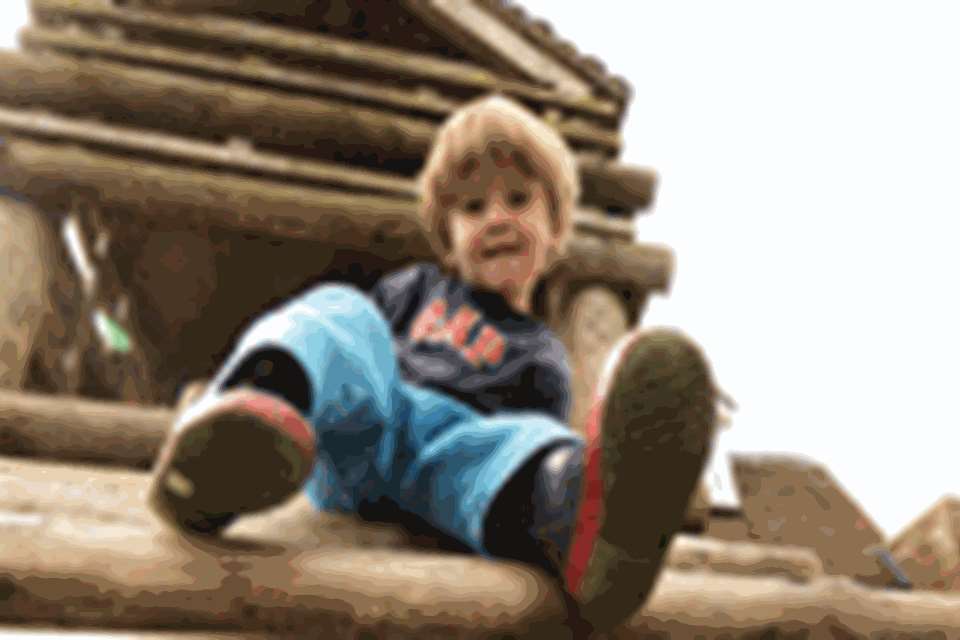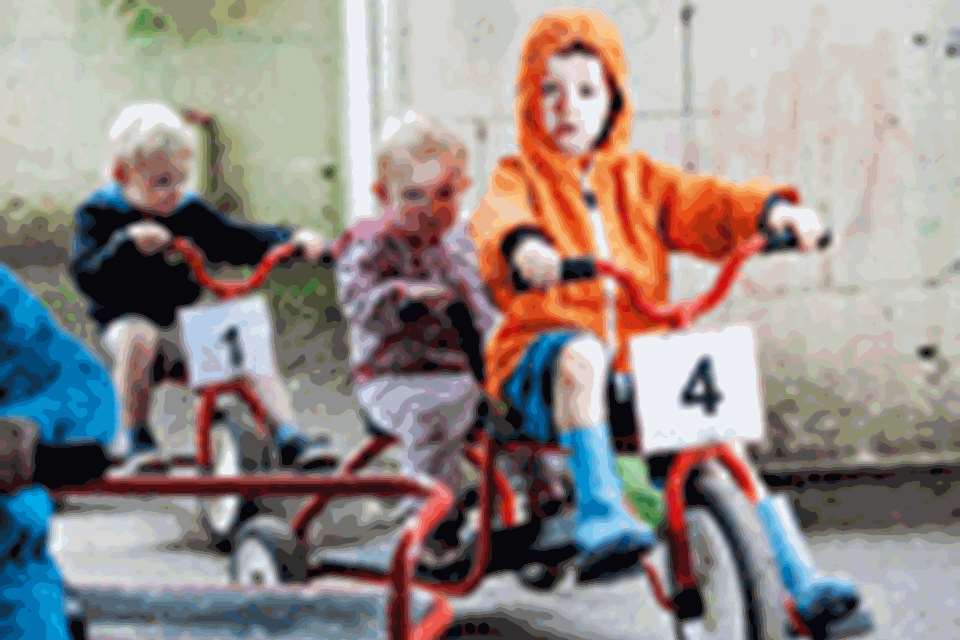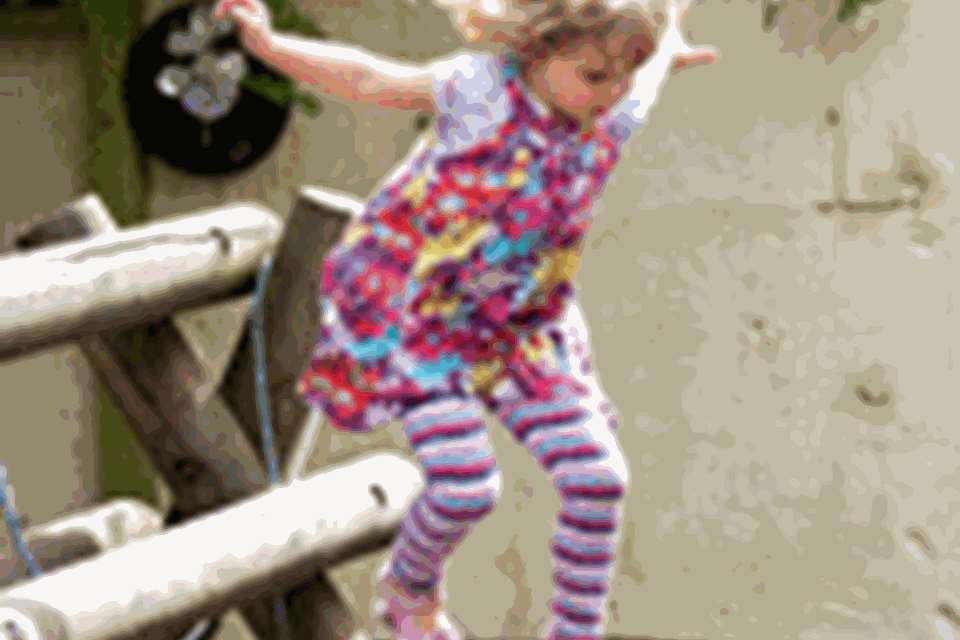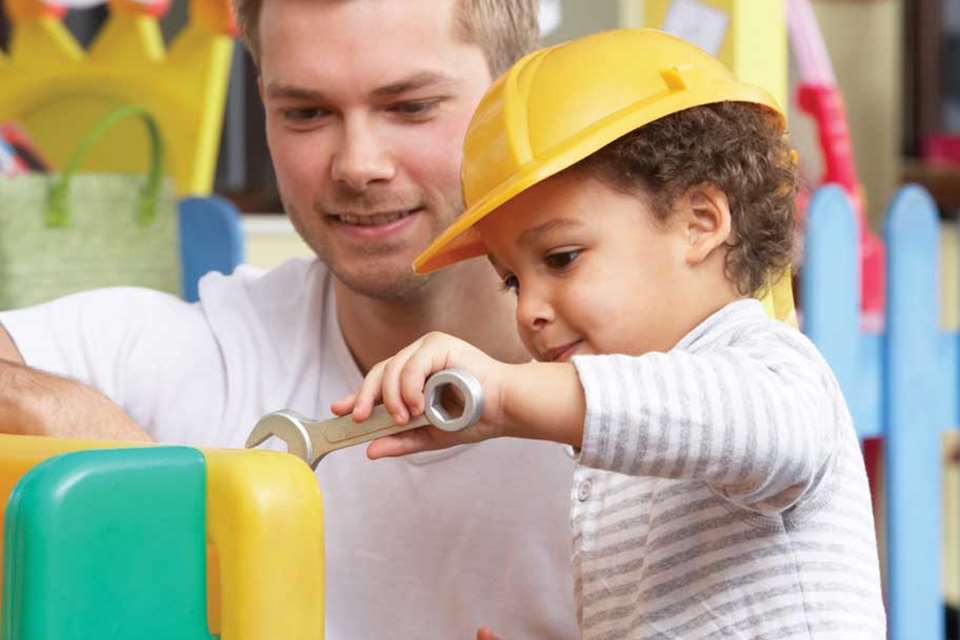Home learning - Hand-eye co-ordination
Penny Tassoni
Monday, June 2, 2014
Penny Tassoni suggests activities to help your child develop hand-eye co-ordination

A useful skill that your child will develop over time is the ability to co-ordinate hand and eye movements. These movements are useful for living independently as they allow children to feed and dress themselves. They are also important in helping children to learn, as they allow children to try out experiences and activities such as cooking, looking at books or painting.
One aspect of hand-eye co-ordination is the development of a hand preference. It means that one hand becomes more skilled. While nature plays a part in the development of hand-eye co-ordination, children also need plenty of opportunities to practise movements. Happily, there are plenty of simple activities that can support your child at home.
SHAKE AND RATTLE
From three to nine months
Reaching out for a toy with two hands may seem simple, but it takes babies six or so months before they can do this easily. It is a good example of an essential hand-eye co-ordination movement. To encourage these movements, sit your child on your lap and draw their attention to an object. Shaking a rattle works well, but also show your baby household objects such as a metal teaspoon or pastry brush.
The key when looking for suitable objects is to make sure that they are not too heavy and to remember that they will end up in your baby's mouth. Don't expect that your baby will always respond quickly or get the item first time. Give plenty of encouragement and, if needed, bring the object a little closer.
How this activity helps your child
Shape and textures: This activity helps your child to learn about the shapes and textures of objects.
Physical development: By handling a range of objects, babies develop strength in their arms.
Perseverance: Getting hold of an object after trying a few times teaches babies that perseverance pays off.
What next?
Look out for objects that will make a sound if they are banged together, such as two small metal lids.
PLAY WITH NATURAL MATERIALS
From six months to two years
Many early years settings use what is called 'treasure basket' play to encourage older babies and toddlers to develop a range of skills.
You can create your own version by putting out a range of natural objects for your child to touch, handle and explore. Look out for teaspoons, wooden spoons, scarves, metal lids and other objects made of natural materials and bring them together in a low basket or in a pile.
Watch to see how your child reaches and picks them up. Expect that your child will also use his or her mouth to explore them, so do supervise this activity.
How this activity helps your child
Concentration: If you can provide a wide range of objects, your child is likely to concentrate for quite a while.
Shape and texture: This activity provides children with first-hand experiences of various shapes and textures.
Creativity: Playing and exploring helps children's creativity.
What next?
This type of play can be built upon as your child grows. From 18 months, put in some man-made materials such as plastic bottles, corks and containers.
SPOONS AND FORKS
From 18 months to three years
Mealtimes provide fantastic opportunities for toddlers to practise their hand-eye co-ordination. While most toddlers will still try to use their hands to eat, try encouraging your child to use a spoon.
To help your child, it is worth looking out for small bowls with straight-ish sides and providing foods that are more likely to 'stick' to the spoon to start with. Once your child has mastered using a spoon, pop a fork into their hand.
Look out also for some foods that can be speared, such as thick slices of banana. Don't worry if your child does not use the fork straight away as it takes time for children to get the knack of using two tools.
How this activity helps your child
Problem-solving: Using a spoon and fork requires a level of problem solving as children have to work out how to manoeuvre the food.
Size and shape: Children learn about size and shape as they load food onto their spoon.
Self confidence: Being able to feed themselves independently helps to develop their confidence.
What next?
Model the use of a knife and fork with a view to introducing these tools afterwards.
PREPARING FRUIT
From two to four years
 It may seem simple, but preparing fruit and vegetables is a great way of not only helping your child to eat healthily, but also developing their hand-eye co-ordination. Start by giving your child simple fruit such as bananas or satsumas to peel once you have started them off.
It may seem simple, but preparing fruit and vegetables is a great way of not only helping your child to eat healthily, but also developing their hand-eye co-ordination. Start by giving your child simple fruit such as bananas or satsumas to peel once you have started them off.
Once your child has mastered these, there are plenty of other things to try. You could hull strawberries or shell peas. Look out also for opportunities to encourage your child to wash fruit and vegetables. With summer arriving, you might also see if your child wants to try using the salad spinner.
How this activity helps your child
Listening skills: Simple cooking activities help children develop listening skills.
Vocabulary: Children can learn a wide range of vocabulary such as 'peel', 'rinse' as well as the names of fruit and vegetables.
Self-confidence: Cooking activities help children feel they are capable.
What next?
Try making a banana smoothie together by mashing up a banana, some yoghurt and a little apple juice.
SWEEPING UP
From two to four years
Many domestic tasks help children's hand-eye co-ordination. A good example is using a broom or dustpan and brush. From two years, many children simply love to do tasks alongside adults.
Start off by doing the action yourself and see if your child wants to take over. Expect at first that your child will not be very competent or that they may deliberately put things on the floor.
How this activity helps your child
Hand preference: Using a dustpan and brush regularly can help to strengthen the child's hand preference.
Communication: Doing household tasks together tends to create wonderful opportunities to chat.
Independence: Mastering simple household tasks helps children to become more independent.
What next?
Look out for other household tasks that your child can do with you, such as dusting.
WASHING UP
From three to five years
While many adults find washing up a chore, for young children it is an extension of water play. Developmentally, it is a great activity because high levels of hand-eye co-ordination are needed and it also has the potential to strengthen hand preference.
Begin by creating a stable platform by using a stool or, alternatively, put the washing-up bowl onto a table. Make sure that the water is not too hot and put only a small amount of washing-up liquid in the bowl. Choose items for washing that are not breakable or sharp. Expect that the process will be slow and that your child may spend time just enjoying the feel of the water.
How this activity helps your child
Hand preference: Washing up is great for strengthening hand preference.
Communication: Use this time to chat together.
Early maths: Washing up is great for children to experience concepts such as capacity, shape and size.
What next?
To develop further hand-eye co-ordination, put out tools such as cloths and brushes. See also if your child can dry up.








